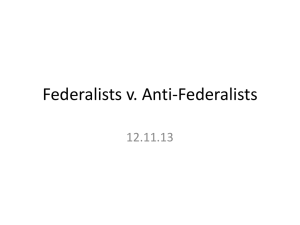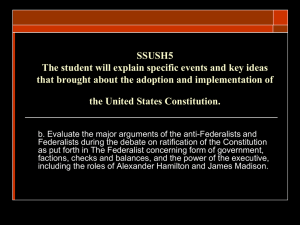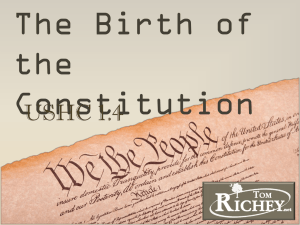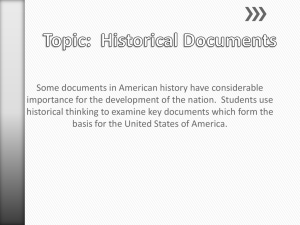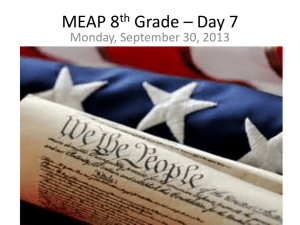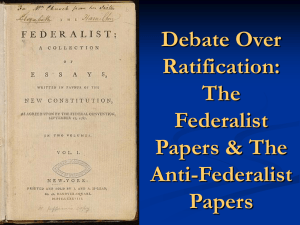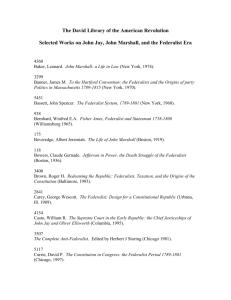Group 6 GoPo
advertisement
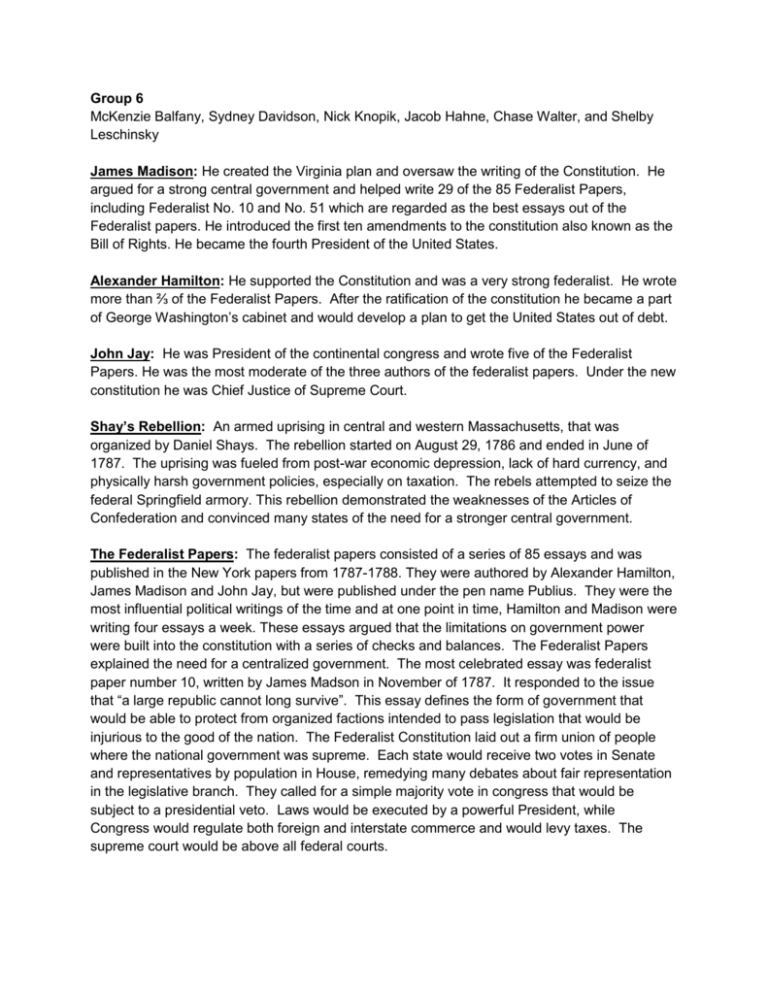
Group 6 McKenzie Balfany, Sydney Davidson, Nick Knopik, Jacob Hahne, Chase Walter, and Shelby Leschinsky James Madison: He created the Virginia plan and oversaw the writing of the Constitution. He argued for a strong central government and helped write 29 of the 85 Federalist Papers, including Federalist No. 10 and No. 51 which are regarded as the best essays out of the Federalist papers. He introduced the first ten amendments to the constitution also known as the Bill of Rights. He became the fourth President of the United States. Alexander Hamilton: He supported the Constitution and was a very strong federalist. He wrote more than ⅔ of the Federalist Papers. After the ratification of the constitution he became a part of George Washington’s cabinet and would develop a plan to get the United States out of debt. John Jay: He was President of the continental congress and wrote five of the Federalist Papers. He was the most moderate of the three authors of the federalist papers. Under the new constitution he was Chief Justice of Supreme Court. Shay’s Rebellion: An armed uprising in central and western Massachusetts, that was organized by Daniel Shays. The rebellion started on August 29, 1786 and ended in June of 1787. The uprising was fueled from post-war economic depression, lack of hard currency, and physically harsh government policies, especially on taxation. The rebels attempted to seize the federal Springfield armory. This rebellion demonstrated the weaknesses of the Articles of Confederation and convinced many states of the need for a stronger central government. The Federalist Papers: The federalist papers consisted of a series of 85 essays and was published in the New York papers from 1787-1788. They were authored by Alexander Hamilton, James Madison and John Jay, but were published under the pen name Publius. They were the most influential political writings of the time and at one point in time, Hamilton and Madison were writing four essays a week. These essays argued that the limitations on government power were built into the constitution with a series of checks and balances. The Federalist Papers explained the need for a centralized government. The most celebrated essay was federalist paper number 10, written by James Madson in November of 1787. It responded to the issue that “a large republic cannot long survive”. This essay defines the form of government that would be able to protect from organized factions intended to pass legislation that would be injurious to the good of the nation. The Federalist Constitution laid out a firm union of people where the national government was supreme. Each state would receive two votes in Senate and representatives by population in House, remedying many debates about fair representation in the legislative branch. They called for a simple majority vote in congress that would be subject to a presidential veto. Laws would be executed by a powerful President, while Congress would regulate both foreign and interstate commerce and would levy taxes. The supreme court would be above all federal courts. The Anti Federalist Papers: A collection of writings that countered The Federalist Papers. The Anti Federalist papers argued for a loose confederation of states, one vote in congress for each state, ⅔ vote, laws executed by committees of congress, no congressional power over commerce (states free to impose levies and restrictions on trade with other states and/or economic agreements with foreign countries), payment of taxes by states were voluntary, no federal courts, unanimity of states for amendments, and lastly no authority to act directly upon individuals. There were many authors of these writings and were less organized than The Federalist Papers. The Bill of Rights: The collective name for the first 10 amendments to the Constitution. These rights were introduced by James Madison and were created September 25th, 1789. Originally James Madison introduced nineteen amendments but only ten were ratified. The Bill of Rights was ratified on December 15th, 1791 and guarantees a number of personal freedoms, centered around liberty and property. These rights initially only supported white men. They were created mainly because of the Anti Federalists. The Federalists: Most of them were wealthy, well-educated, and unified by the desire for a powerful centralized government. They wanted an efficient government that could protect their economic status. They also believed that the rebellions had been caused by lack of a central government, not the morals of citizens. Major Federalists were Alexander Hamilton, James Madison, and John Jay. Federalist believed US needed a strong national government to function and control uncooperative states, men of experience and talent should govern the nation, and the national government would protect the rights of the people. They were more sympathetic to separation of church and state. The Anti Federalists: They opposed the constitution and wanted a more federal system. They were often poor farmers, state rights advocates, ill-educated, illiterate, debtors, paper money advocates, and of the lower class. They insisted on having the Bill of Rights in the constitution. They opposed strong central government, believed strong national government threatened rights of the common people and state power, and the constitution favored wealthy men and preserved their power. The Anti Federalists thought the constitution lacked a Bill of Rights, argued against the ⅔ ratification plan, and opposed omitting any reference to God.

